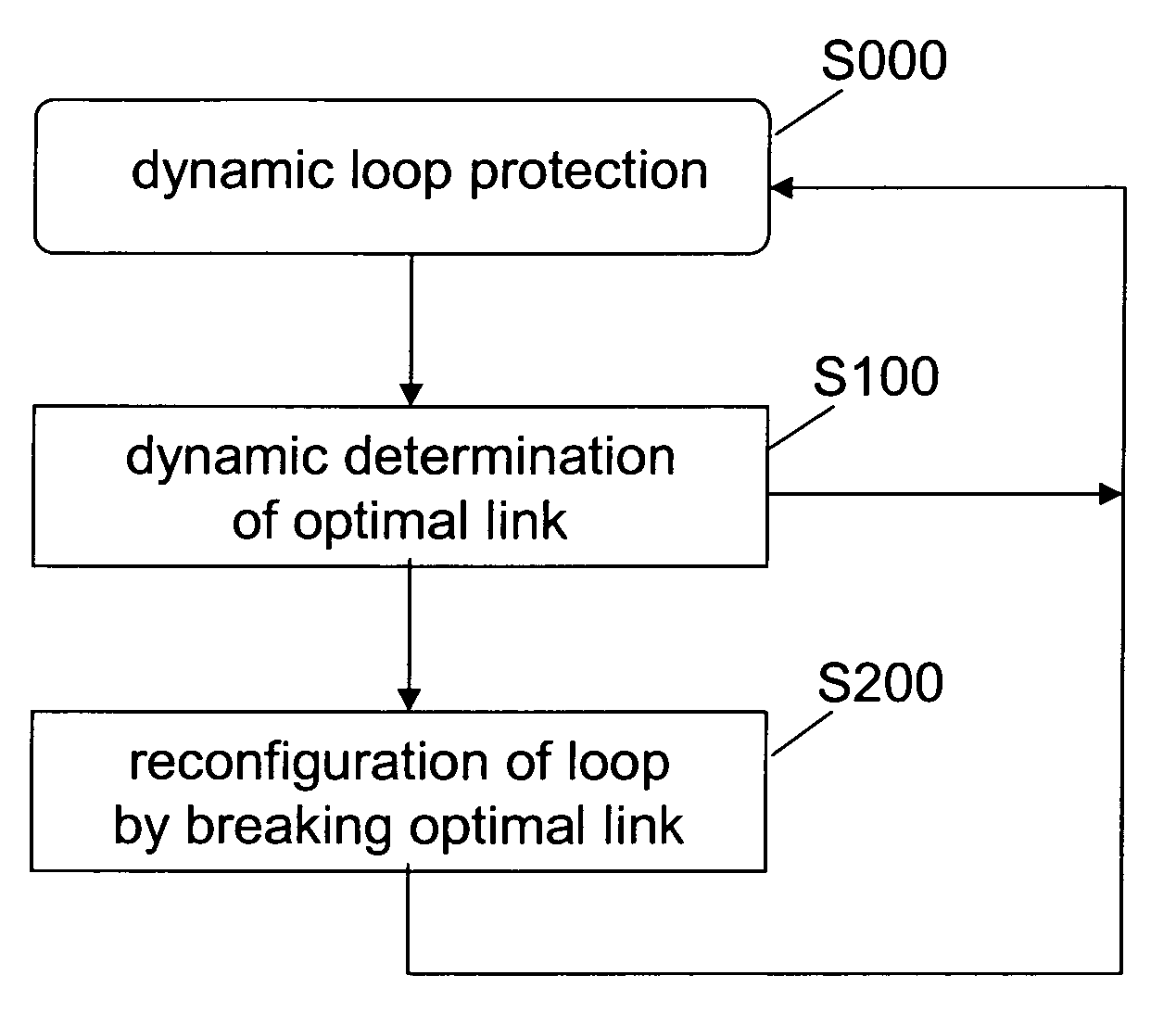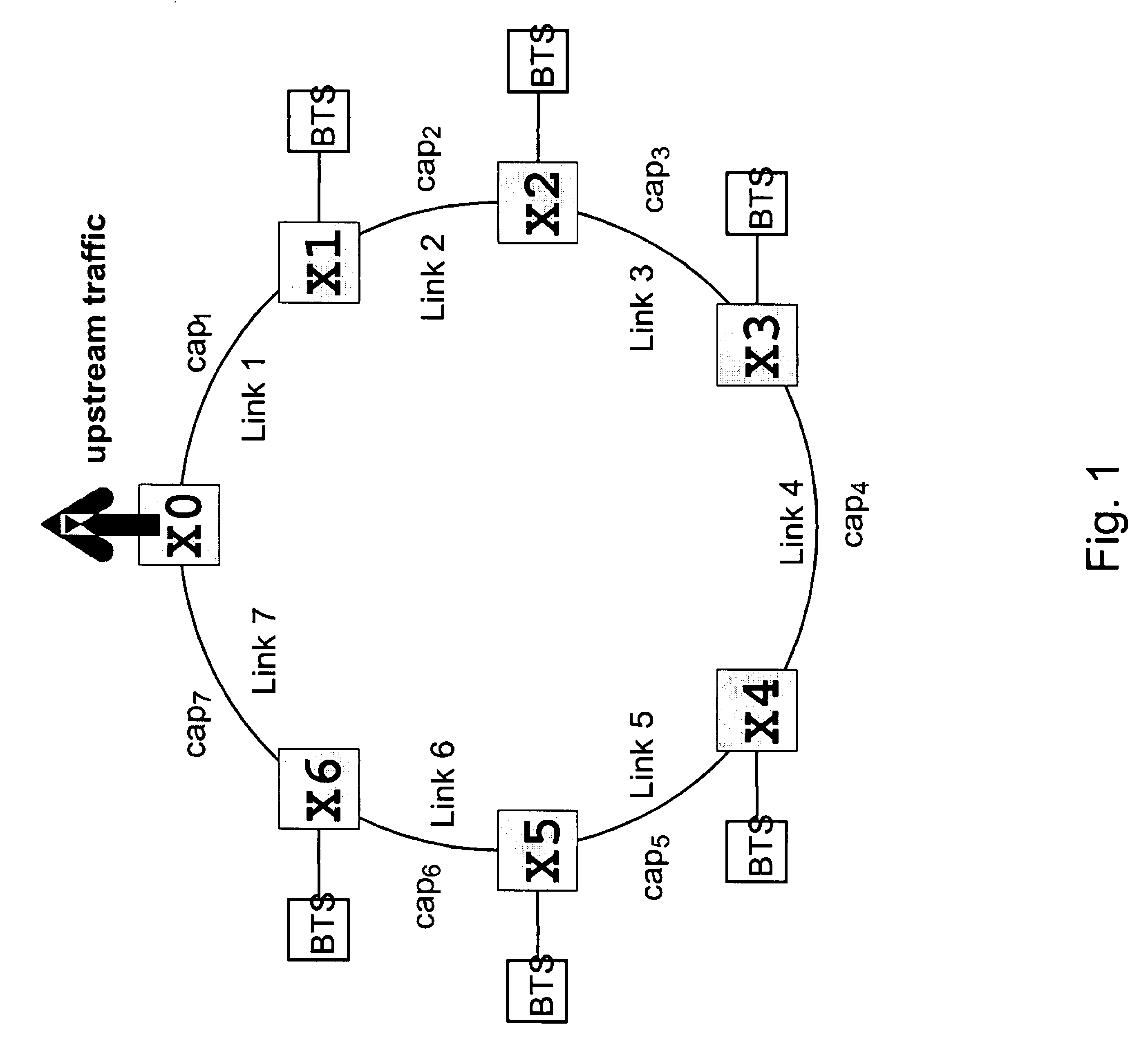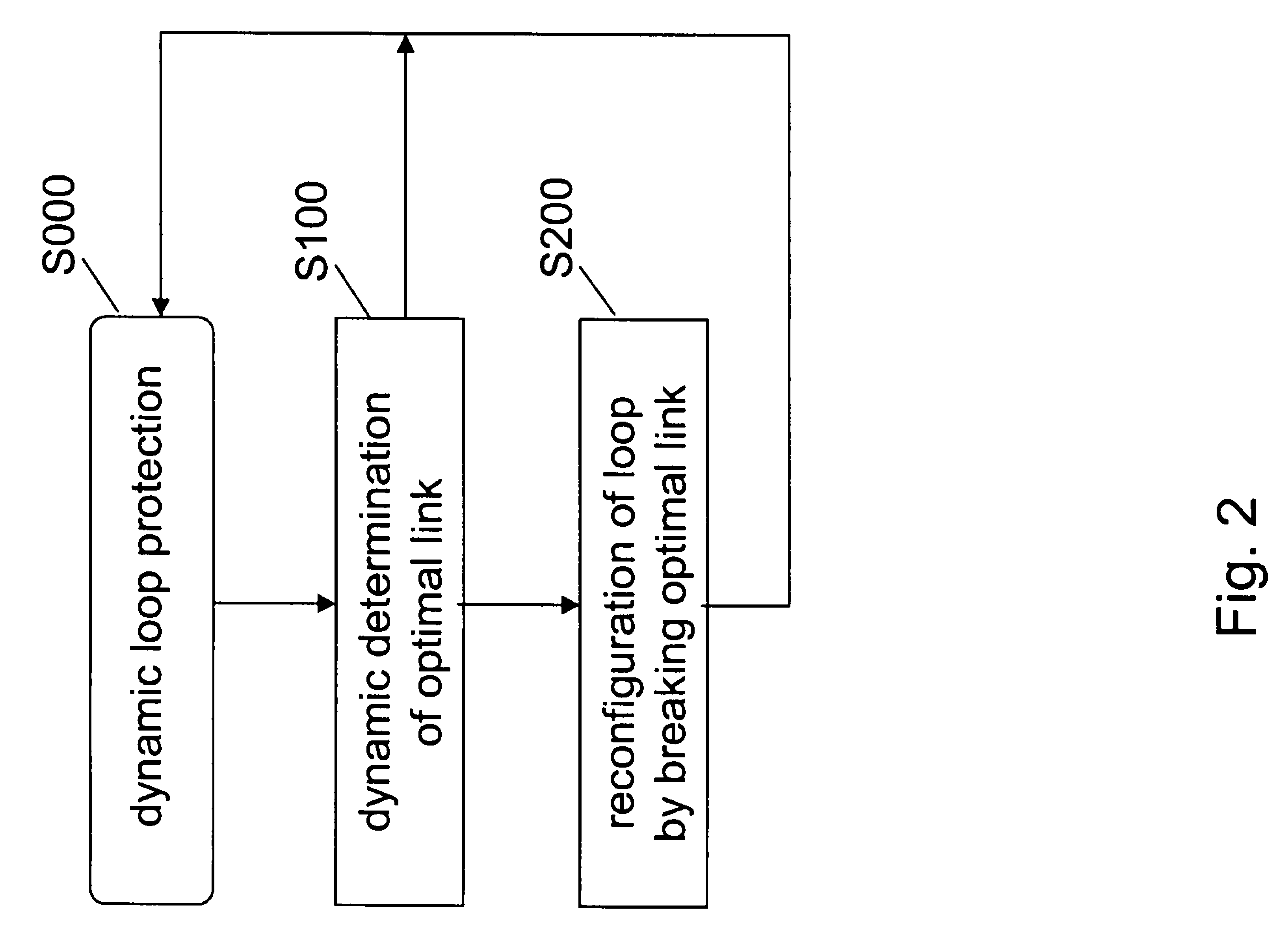Traffic protection in a communication network
a communication network and traffic protection technology, applied in data switching networks, frequency-division multiplexes, instruments, etc., can solve the problems of easy degradation of mwr link quality, link breakage, no capacity or bandwidth flexibility, etc., and achieve the effect of improving loop protection
- Summary
- Abstract
- Description
- Claims
- Application Information
AI Technical Summary
Benefits of technology
Problems solved by technology
Method used
Image
Examples
Embodiment Construction
[0035]The present invention and exemplary embodiments thereof are described herein below with reference to the drawings representing particular non-limiting examples thereof. A person skilled in the art will appreciate that the invention is not limited to these examples, and may be more broadly applied.
[0036]In particular, the present invention and exemplary embodiments thereof are described in relation to a loop structure (as e.g. depicted in FIG. 1) which is independent of the overall network architecture. That is, although it is referred only to the loop, the overall architecture of the underlying communication network may for example also be a network of chain, star, loop or mesh architecture / topology, in which the loop represents only a part of the overall connectivity. It is to be noted that the term loop is to be understood as a synonym for the term ring, so the description as well be transferable to any kind of rings in any kind of underlying networks. Further, Ethernet is u...
PUM
 Login to View More
Login to View More Abstract
Description
Claims
Application Information
 Login to View More
Login to View More - R&D
- Intellectual Property
- Life Sciences
- Materials
- Tech Scout
- Unparalleled Data Quality
- Higher Quality Content
- 60% Fewer Hallucinations
Browse by: Latest US Patents, China's latest patents, Technical Efficacy Thesaurus, Application Domain, Technology Topic, Popular Technical Reports.
© 2025 PatSnap. All rights reserved.Legal|Privacy policy|Modern Slavery Act Transparency Statement|Sitemap|About US| Contact US: help@patsnap.com



